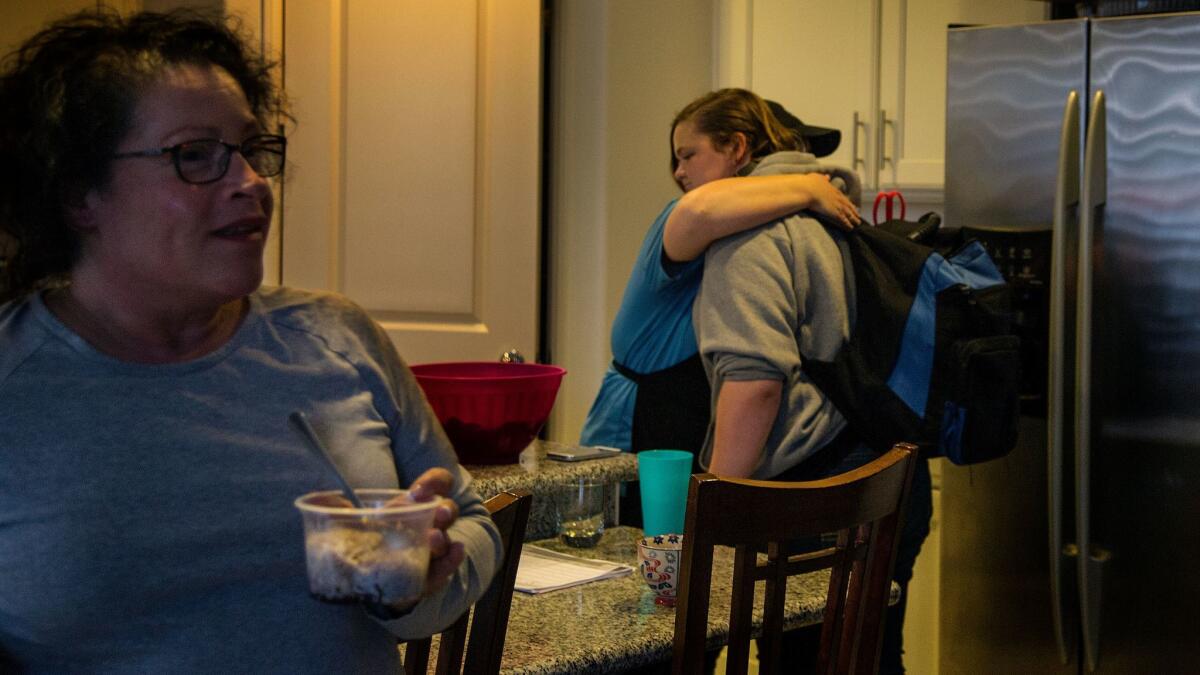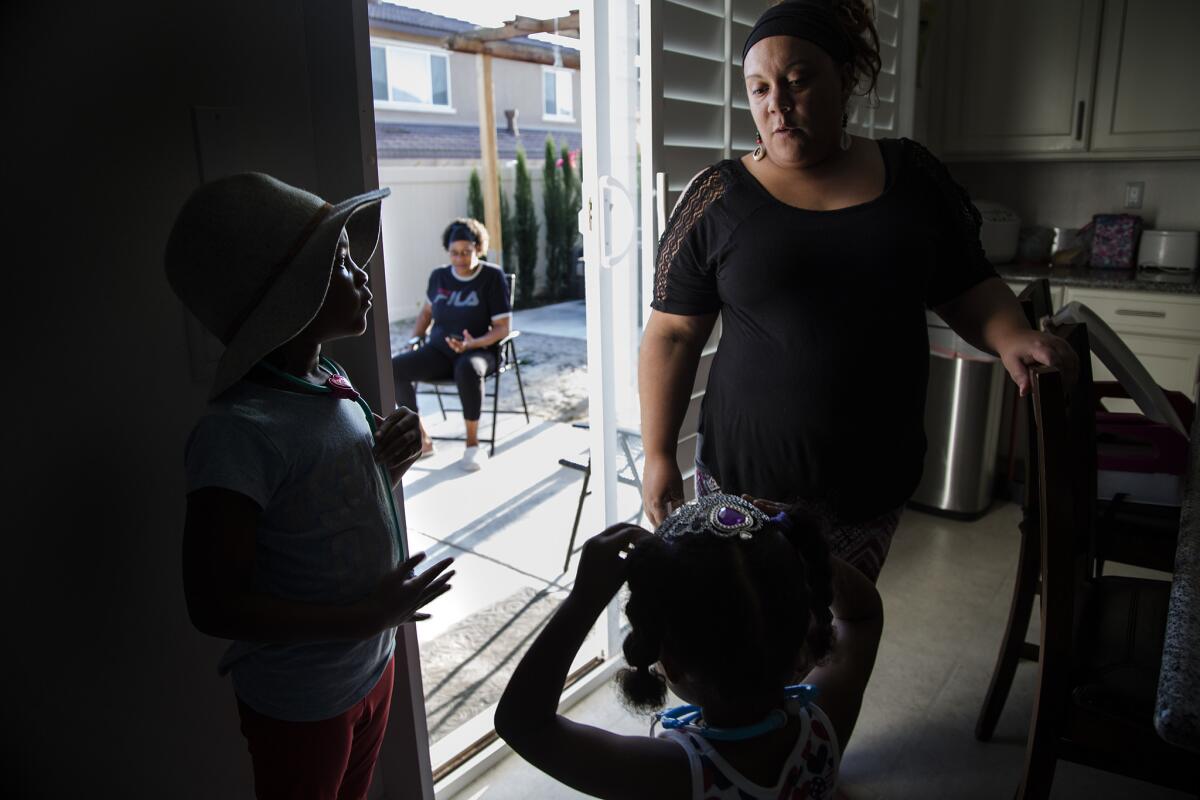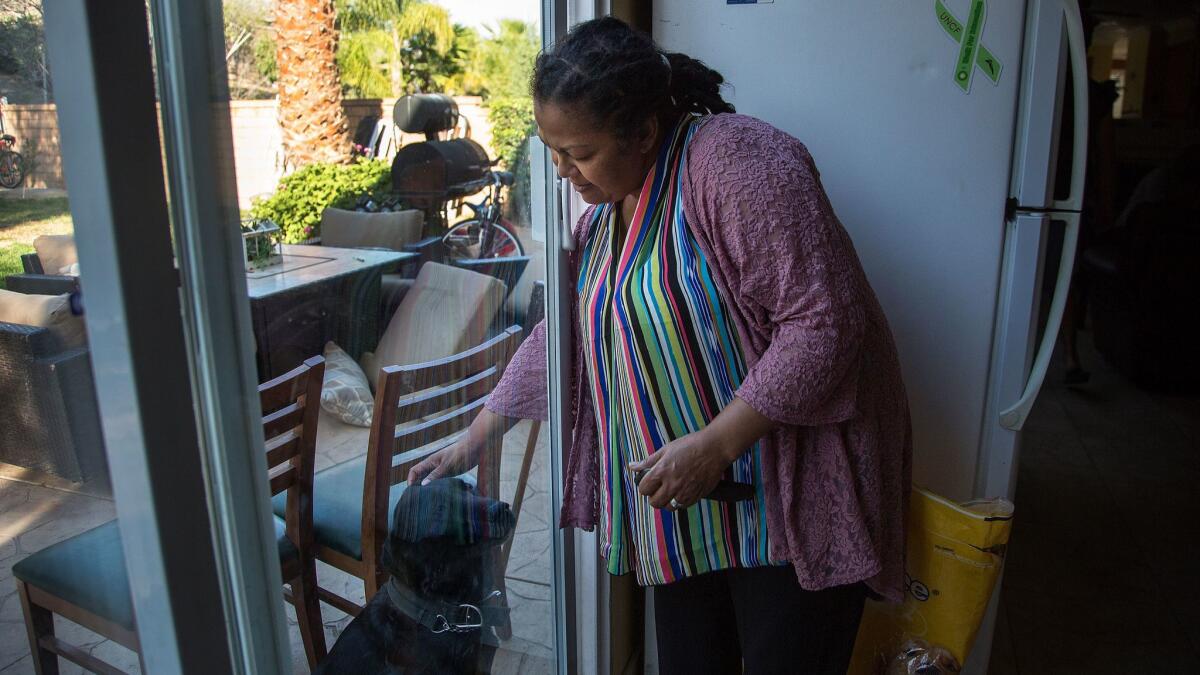Prop. 47 got thousands out of prison. Now, $103 million in savings will go towards keeping them out

Vonya Quarles grew up in South Los Angeles and describes herself as a third-generation convicted felon. But by the time she took the microphone at a Highland town hall meeting in January 2016, she was a lawyer and executive director of a Riverside County nonprofit that helps connect the homeless, formerly incarcerated and mentally ill to transitional housing.
With applause from the audience, she urged state officials not to create “an additional funding stream for the sheriff,” but to pour new funds into community groups, the kind that had helped her kick a drug addiction and get off the streets. That was the fundamental promise of Proposition 47, the sweeping, controversial 2014 ballot measure that downgraded six drug and theft crimes to misdemeanors and allowed defendants to renegotiate their punishments. This spring, the state will begin the process of awarding $103 million in grants, all funded by the ballot initiative’s cost savings from keeping fewer nonviolent offenders in prison.
For the measure’s large coalition of supporters, including criminal justice advocates such as Quarles, it is a long-awaited step forward. Other states have passed similar laws. But California is the lone state investing the savings from keeping fewer people behind bars in services to help people stay out of prison.
Nearly 60 public agencies have submitted program proposals released last week. They include cities and counties, health and human services divisions and probation and law enforcement departments statewide. Among their petitions are initiatives to provide youth and adult offenders with counselors and case managers, therapy, housing and job opportunities.
Tasked with choosing which programs receive funding is an executive steering committee composed of criminal justice officials, advocates and former inmates who know the system from the inside. Not long after she spoke up in Highland, Quarles joined the group.
“We have listened to law enforcement talk about how horrible Prop. 47 is,” she said in an interview this month. “Now we have a chance to help the people who are hurting.”

In some ways, Proposition 47 has accomplished what it was designed to do. It helped reduce the prison population, allowing the state to comply with a federal court order that found overcrowded prison conditions in California violated constitutional standards.
Nearly 4,700 people have since been re-sentenced and released from state prisons, and the California Department of Corrections and Rehabilitation estimates 3,300 fewer individuals will now be incarcerated each year. The new law also lowered the state’s daily average jail population by about 8,000 people, according to a report from Californians for Safety and Justice.
But Proposition 47 was written in a way that attempted to avoid an unfunded mandate, and three years passed before savings could be calculated and allotted to community and social services, criminal justice advocates and defense lawyers said, causing many former inmates to end up on the streets with no safety net or support system. Law enforcement officials and others have said the measure has allowed offenders to continue breaking laws with little consequence.
Political debate has centered on whether Proposition 47 is causing crime rates to rise in several cities. In some areas, local law enforcement statistics show, street officers are making fewer drug arrests, and police and retailers point to increasing property theft, prompting state legislation this year to propose a ballot measure that would amend parts of the law, making it a felony to steal $950 worth of property in a year. Under Proposition 47, any single theft under $950 in property value is considered a misdemeanor, even for repeat offenders.
With so much at stake, criminal justice groups and community members say they have lobbied, written letters to lawmakers and filled legislative hearings in Sacramento to attempt to counter the negative publicity about the measure and promote a public safety approach that balances prevention with treatment and incarceration.
Their first battle came over calculation of the state’s fiscal savings from Proposition 47. The independent Legislative Analyst’s Office had initially estimated between $150 million and $250 million in annual savings.
Gov. Jerry Brown’s newest budget estimates the savings at $42.9 million after accounting for a temporary increase in the number of parolees and the court workload that comes with resentencing. State officials say they expect to distribute a total of $103 million over the next three years.
“Most Californians today agree that we need a set of investments that provide options beyond prisons, and many of those options work better to stop repeat crime,” said Lenore Anderson, executive director for Californians for Safety and Justice. “That is going to be good for public safety but also good for saving the state money.”

Legislation signed by Brown in 2014 settled some of the next debate: guidelines for the grant proposal process.
It set aside 65% of Proposition 47 savings for the state Board of State and Community Corrections, requiring that money also go to programs developing housing and employment opportunities for released inmates. And it required that the committee awarding the grants have a diverse membership, including people who had been formerly incarcerated.
The executive committee includes six former inmates and is co-chaired by Kern County Supervisor Leticia Perez, a former public defender, and former Hollywood producer Scott Budnick, who left the film industry to create his own criminal justice nonprofit.
In crafting the grant proposal application, members of the executive committee said they made it their priority to ensure money would flow back to the community. According to their guidelines, government agencies will receive the grant awards, but more than 50% of the funds must go directly to the community-based organizations they contract with for mental health, drug abuse and other social services.
It was a huge win, committee members said.
“Oftentimes, when the government is delivering services to a population that they are not proximate to, you don’t see the results you want,” Budnick said.
Perez said it helped to have former inmates at the table. Similar committees typically consist of members with law enforcement backgrounds.
“It was like revolution on a very small scale, but very meaningful,” Perez said. “The message was very clear — that this money was to be for the honest, actual rehabilitation of people who are desperate to reach their potential. That this is not business as usual.”

At the Highland meeting, Quarles, who once shuffled in and out of juvenile detention, was overtaken with emotion, she recalled.
“We worked hard because Proposition 47 offered us something that we didn’t have before, and that was relief of carrying felony convictions on our backs,” said Quarles, executive director of the Corona nonprofit Starting Over Inc. “It was supposed to be with the promise to get mental health and substance abuse treatment for our folks — not to have to go to jail to get these services.”
She said she did not think she would be chosen for the executive steering committee months later.
Neither did John Jones III, who spoke at another town hall meeting in Oakland, and served eight years in prison for riding in a car as a passenger during a deadly shooting. He now coaches young people through an Oakland group devoted to helping young people, particularly those entangled in the juvenile justice system.
As the group crafted the application, Quarles and Jones helped guide difficult conversations on which programs and services could address trauma and were most useful to released inmates.
“We were subject matter experts of reentry,” Quarles said. “The rest of the committee respected that, in the same way that we respected their expertise in their respective fields.”
In the next few months, the committee will sift through proposals from communities across the state. The city of Corning, for example, is requesting $1 million for a youth diversion program that could potentially serve 145 juveniles ages 12 to 14.
In Los Angeles, a request from Mayor Eric Garcetti’s office asks for nearly $6 million to help 200 former inmates find and keep jobs through mentoring and counseling services.
“I’m excited about what’s next,” Jones said. “Going into this, I was hoping it wasn’t going to be a rubber-stamp operation, or that every idea you have you get shut down. It didn’t feel like that. That is what made it unique to me.”
Prop. 47 promises a new start for ex-offenders carrying years-old burdens »
By the numbers: Proposition 47
To reduce the prison population, California changed some drug and theft crimes to misdemeanors and allowed offenders to renegotiate their punishments. The prison savings will now be invested in grants for mental health and rehabilitation programs.
Total dollars to be distributed
$103 million over three years
Total grant applications
58
Total number of petitions for re-sentencing or changes in criminal records:
Almost 280,000
Total estimated number of eligible offenders in Los Angeles County
500,000
Source: California Board of State and Community Corrections; Californians for Safety and Justice
Twitter: @jazmineulloa
ALSO:
The Big Campaign: Prop 47 is part of larger push
Prop. 47 promises a new start for ex-offenders carrying years-old burdens
Get the L.A. Times Politics newsletter
Deeply reported insights into legislation, politics and policy from Sacramento, Washington and beyond. In your inbox three times per week.
You may occasionally receive promotional content from the Los Angeles Times.








